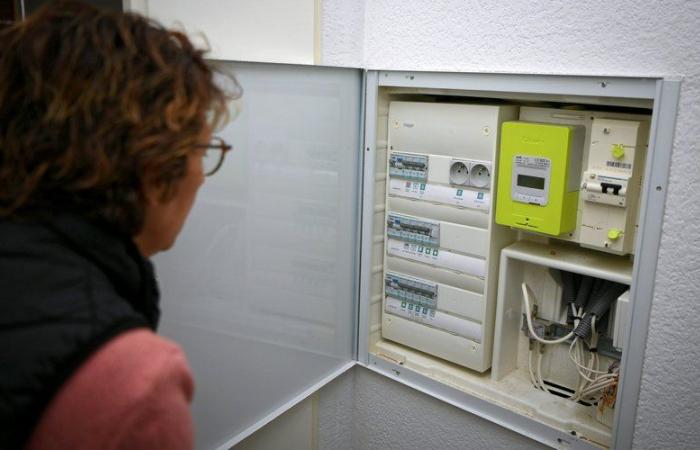The energy transition continues to progress globally. 2023 stands out as a pivotal year where the milestone of 30% ofelectricity generated fromrenewable energy was exceeded for the first time, according to Ember. This encouraging progress is not without repercussions for consumers: reflecting this new situation, the price of electricity could change.
In France in particular, new electricity pricing is under discussion in order to encourage consumption during new off-peak hours. The changes taking place in the electricity markets and the European experiments allow us to outline several recommendations to make these future tariffs more effective.
A need for revision already present
Current electricity prices in France are based in particular on a structure based on two periods, particularly for individuals: peak hours and off-peak hours. The billing of one in two French households depends on this distinction. This option is attractive because, with it, the kilowatt-hour of electricity is cheaper at certain times of the day, when the demand on the electricity network is lowest.
Although there are local disparities in time slots, as Enedis points out, more than 60% of accommodations benefit from so-called nighttime off-peak hours. These time slots, located between 8:00 p.m. and 8:00 a.m., offer households a total of 8 hours per day of reduced rates, which encourages them to postpone certain electrical uses. For other consumers, off-peak hours are distributed differently, with two to three hours between 12:00 p.m. and 5:00 p.m., periods when electricity consumption is also lower. This diversity in the distribution of off-peak hours aims to optimize the management of energy consumption according to local network capacities and available production, helping in particular to avoid the use of costly peaking plants.
However, times are changing and France has already experienced more than 250 hours at negative prices in 2024, including almost 90% between 11 a.m. and 6 p.m. according to ENTSO-e data. These negative prices occur when production exceeds demand, forcing electricity producers to pay for their electricity to be consumed, often to avoid costly operations to restart thermal power plants. This phenomenon occurs in particular when photovoltaic solar production is abundant.
When prices become negative
However, the current day/night alternation of peak/off-peak (HP/HC) rates provides little incentive to shift consumption to mid-day hours, although this is advantageous for optimal network management and utility bills. consumers. In fact, the latter cannot benefit from low, or even negative, prices during these slots, since it is the peak hour rate which applies during the day. Thus, the need for a tariff review has recently emerged to better align with emerging trends in France and its neighbors.
The subject is far from trivial due to the importance of demand currently dependent on these off-peak hours. For example, the control of residential hot water tanks, that is to say the ability to automatically activate hot water tanks during off-peak hours, already makes it possible to avoid 2 GW of consumption at peak hours, according to RTE, or the peak production capacity of almost two nuclear power plants. The efficiency gains accessible with a tariff reform would therefore be significant, particularly with the rise of electric vehicles, which will stimulate demand for electricity.
Lessons to learn from our neighbors
France is not an exception on the subject. Many countries have already taken this problem into account for several years. Spain and Sweden have thus chosen to expose consumers to real-time prices, allowing for example to charge their electric car when electricity is the cheapest, or even to be paid for doing so in the event of negative prices. Italy has also chosen to impose a more dynamic tariff, the HP/HC option being the default option for 25 million consumers since 2010. Finally, several electricity suppliers in the United States have taken the in front, and offer price lists distinguishing three time periods, depending on the season, day of the week and hours of the day.
Several lessons can be learned from these experiences: in Spain, several studies have shown that only 40% of households are aware of this pricing, thus reducing its effectiveness and interest. In Italy, the small price differential initially planned between peak and off-peak hours also limited consumer response, reducing flexibility to a few percentages of electricity consumption according to researchers.
France, however, has arguments to put forward, due to its long-standing interest in what is called the “price signal” in economics, as evidenced by the Tempo tariff distinguishing three types of days (blue, white, red) since 1998, well before the deployment of the Linky meter. As a direct consequence of the energy crisis, this tariff is benefiting from renewed interest, going from a low point at 200,000 customers in 2022 to more than 750,000 customers in 2024 according to Enedis.
Flexibility of demand
The deployment of renewable energies and the electrification of uses are all reasons to overhaul the price list. In fact, current off-peak hours no longer sufficiently reflect solar production periods in Europe, a trend that is nevertheless set to assert itself in many countries and due to interconnection with our neighbors. Our research thus highlights that the wider adoption of “solar” off-peak hours would be a first avenue for improving the representativeness of prices in France, while ensuring the readability of the new grids.
Likewise, deploying tariffs more widely with the “peak day cancellation” (EJP) option would make it possible to have tools available in the event of tension on the electricity network, as was the case during the market crisis. from 2021-2022 or during periods of “energy drought”, that is to say periods without wind or sun. With benefits both for consumers’ bills and for the electricity system.
If the observation is clear, the solutions nevertheless require a broader overhaul. Futures markets, in particular, allow suppliers and others in the electricity industry to buy and sell electricity years in advance. This is done via long-term contracts which guarantee a fixed price for a future period, thus providing a certain financial stability and predictability.
Among the products commonly traded on these markets are mainly base and peak contracts. Basic contracts involve the purchase or sale of electricity for continuous supply during all hours of every day (24 hours a day) over a given period. In contrast, peak contracts cover peak hours, generally defined as the hours of 8 a.m. to 8 p.m. on weekdays, when demand for electricity is highest and market prices are most expensive.
The current increasing production of solar energy no longer responds to the logic of historical day/night segmentation, this leads to paradoxical situations, where peak hours now cost less than base hours. The exercise is also difficult, because off-peak hours have two effects: they also make it possible to limit the need for network reinforcement by smoothing consumption over the day, that is to say by limiting peak consumption and therefore the electrical capacity to be supplied to the network. Finding the right balance between market prices and network costs will therefore, without doubt, be a key element.
Significant savings for our electricity bill
On the consumer side, the bill could drop by around 10% if they play the game, that is to say if they consume mainly during these new solar off-peak hours. Conversely, the social cost of the state in which on current HP/HC prices could reach several hundred million euros per year in 2030, due to the progressive loss of interest in historical day/night price signals, relative to the evolution of electricity production mixes in France and Europe towards renewable energies.
At a time when the energy transition is accelerating in Europe, it is therefore essential to reconsider electricity pricing. The combination of new regulations and innovative market offers, for example accompanying the deployment of electric vehicles, could enable the implementation of these new pricing models. We can bet that future announcements from the Energy Regulatory Commission and Enedis will take into account the trends currently at work, and those to come.
Clément Cabot, Doctor in energy economics, Mines Paris – PSL
This article is republished from The Conversation under a Creative Commons license. Read the original article.






